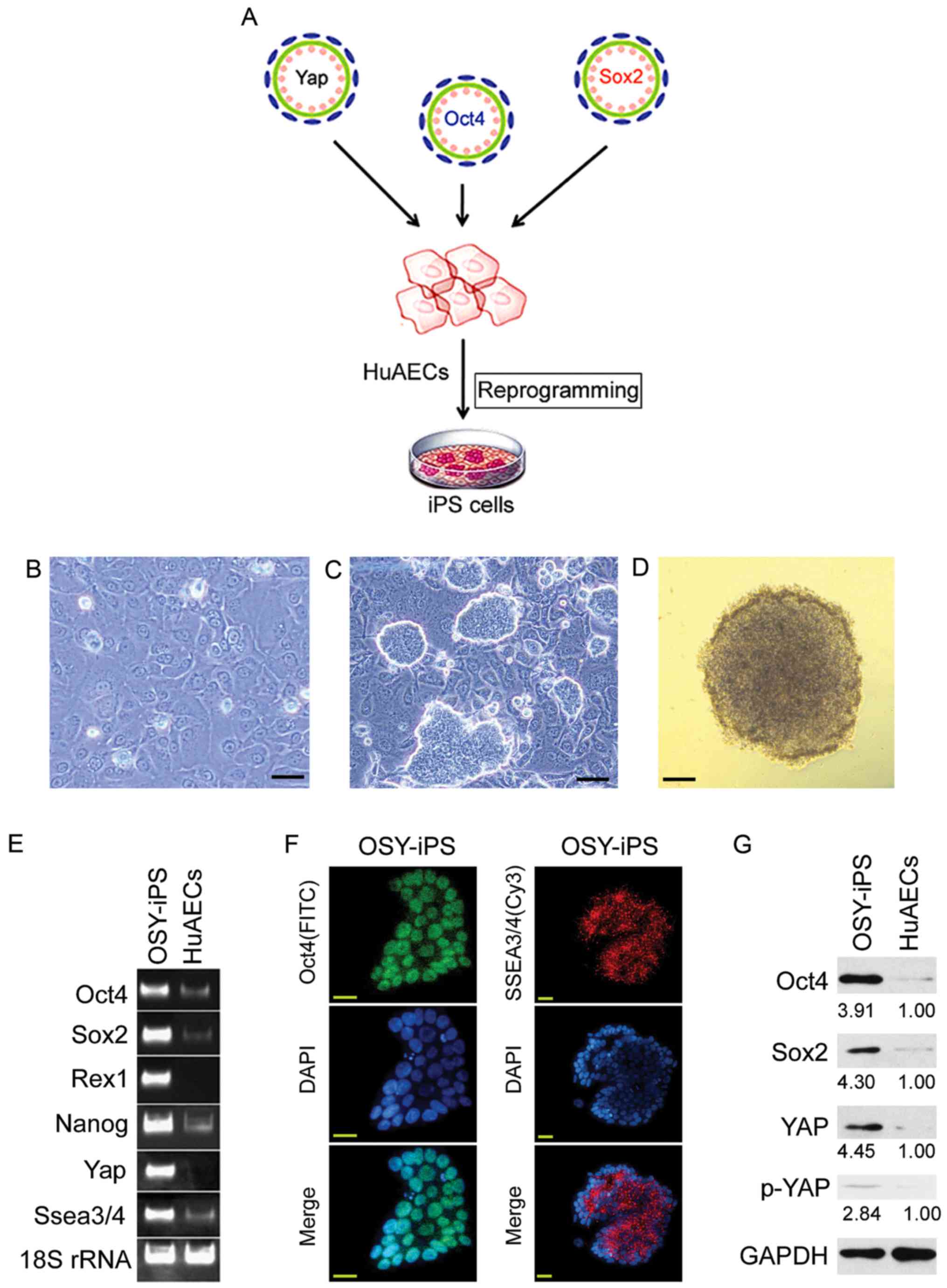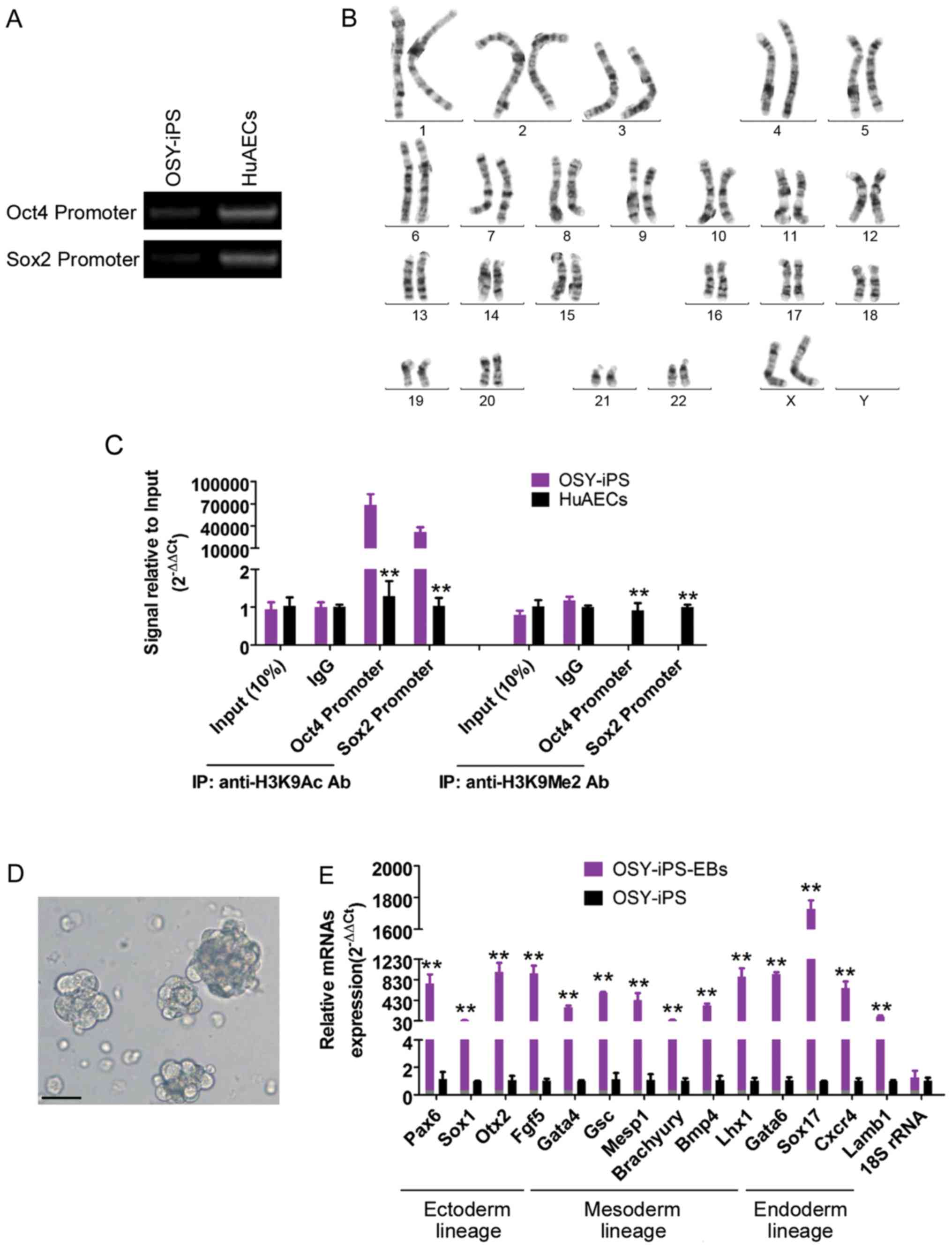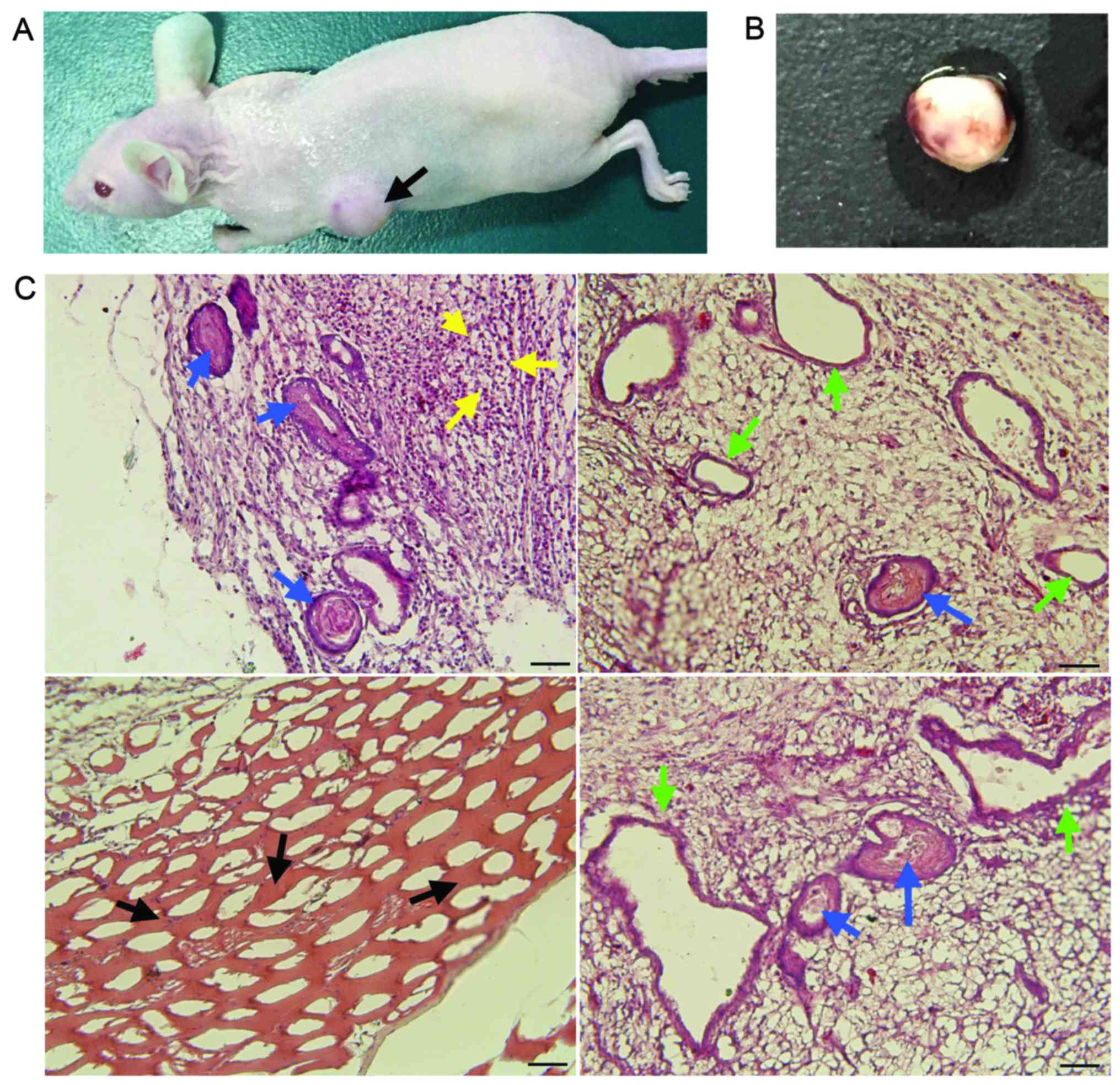Spandidos Publications style
Zhao Y, Fei X, Guo J, Zou G, Pan W, Zhang J, Huang Y, Liu T and Cheng W: Induction of reprogramming of human amniotic epithelial cells into iPS cells by overexpression of Yap, Oct4, and Sox2 through the activation of the Hippo-Yap pathway. Exp Ther Med 14: 199-206, 2017.
APA
Zhao, Y., Fei, X., Guo, J., Zou, G., Pan, W., Zhang, J. ... Cheng, W. (2017). Induction of reprogramming of human amniotic epithelial cells into iPS cells by overexpression of Yap, Oct4, and Sox2 through the activation of the Hippo-Yap pathway. Experimental and Therapeutic Medicine, 14, 199-206. https://doi.org/10.3892/etm.2017.4512
MLA
Zhao, Y., Fei, X., Guo, J., Zou, G., Pan, W., Zhang, J., Huang, Y., Liu, T., Cheng, W."Induction of reprogramming of human amniotic epithelial cells into iPS cells by overexpression of Yap, Oct4, and Sox2 through the activation of the Hippo-Yap pathway". Experimental and Therapeutic Medicine 14.1 (2017): 199-206.
Chicago
Zhao, Y., Fei, X., Guo, J., Zou, G., Pan, W., Zhang, J., Huang, Y., Liu, T., Cheng, W."Induction of reprogramming of human amniotic epithelial cells into iPS cells by overexpression of Yap, Oct4, and Sox2 through the activation of the Hippo-Yap pathway". Experimental and Therapeutic Medicine 14, no. 1 (2017): 199-206. https://doi.org/10.3892/etm.2017.4512


















